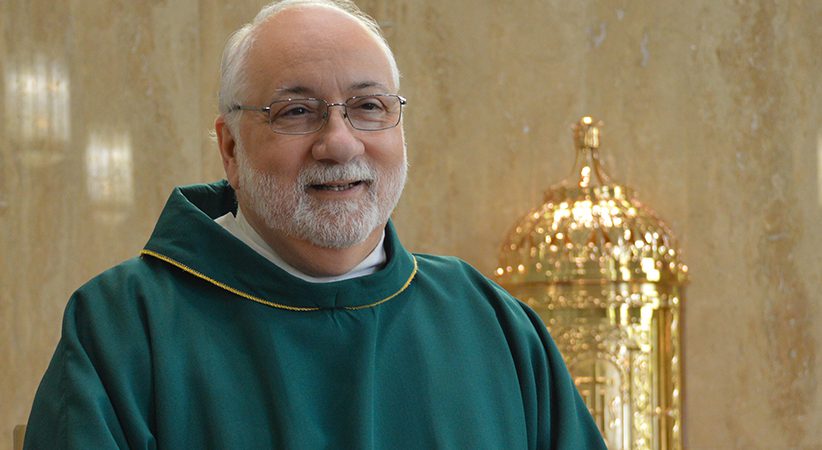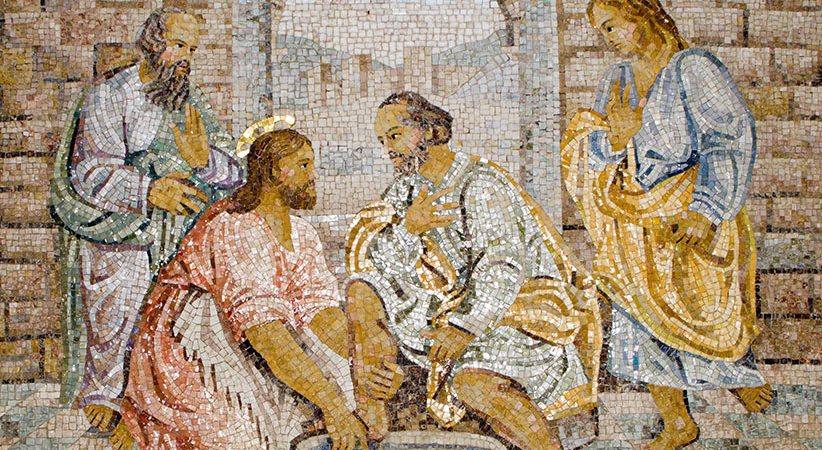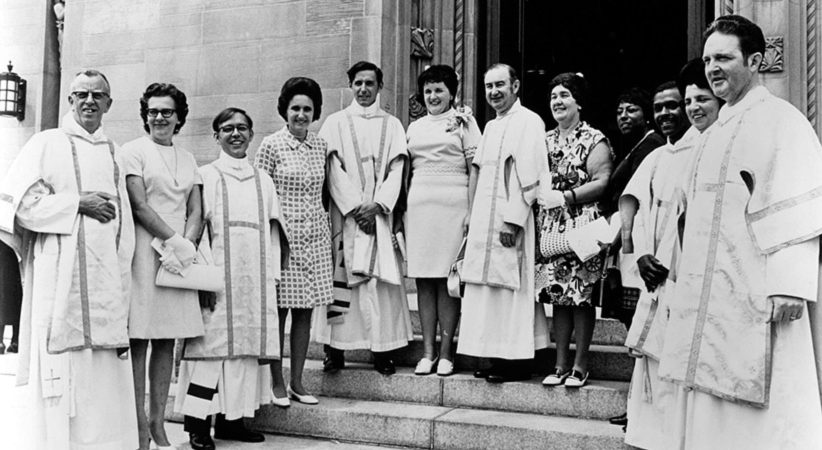Entering into the Pain of Another
How we accompany others in their suffering
Deacon Dominic Cerrato Comments Off on Entering into the Pain of Another
 To serve others is to perceive a need in them and, to the extent possible, help them satisfy that need. If it’s hunger, we give them food. If it’s faith, we proclaim the Good News. If it’s loneliness, we give them company. Sometimes, this means doing something. Most times, it just means being present. In either case, our sensitivity to the needs of others, and consequently the desire to serve, arises not so much from a particular situation, but first and foremost from our interiority. It’s here where we sense another’s pain, experiencing, albeit in a limited sense, his or her suffering. This servant characteristic, so very critical to diaconal ministry, has, at its core, the virtue of empathy.
To serve others is to perceive a need in them and, to the extent possible, help them satisfy that need. If it’s hunger, we give them food. If it’s faith, we proclaim the Good News. If it’s loneliness, we give them company. Sometimes, this means doing something. Most times, it just means being present. In either case, our sensitivity to the needs of others, and consequently the desire to serve, arises not so much from a particular situation, but first and foremost from our interiority. It’s here where we sense another’s pain, experiencing, albeit in a limited sense, his or her suffering. This servant characteristic, so very critical to diaconal ministry, has, at its core, the virtue of empathy.
In its most basic sense, empathy concerns the ability to recognize and enter into the experience of another. This implies a deeply personal sharing in another’s hardship, such that the one empathizing, in a certain sense, experiences the hardship of the other. Empathy creates a bond between the two — the one accompanying the other as he carries his cross, reminding him that he’s not alone and that someone cares. In this respect, it’s nothing less than an act of love.
In the exercise of diaconal ministry, it’s important to recognize that the object of authentic empathy is not so much the suffering of the other but the other himself. In this regard, by being empathetic, we accompany the sufferer through his suffering. This may seem, in a world dominated by positive action, to be feeble and ineffective.
To sit by a hospital bed, spend time with someone with mental illness or simply visit a person who has lost a loved one may seem rather futile considering the sickness, illness or loss itself. However, a comforting presence — one which takes on the suffering of the other by just being there and listening quietly — brings a consolation that enables the sufferer not only to endure but to rise above the hardship, experiencing its redemptive value.
In his book “The Heart of the Diaconate” (Paulist Press, $12.95), Deacon James Keating writes, “Empathy will only remain and deepen over many decades of ecclesial service if that empathy is sourced in Christ and restored in him when human strength, interest and generosity lag.”
While the fullness of God’s grace subsists in the Catholic Church, the finite Church cannot contain the infinite nature of God’s grace. We see this in the many examples of the noble atheist whose selfless altruism inspires others. Nonetheless, it’s often the case that love of man, without the corresponding love of God, renders the noble atheist incapable of sourcing his love beyond himself. True, his love is ultimately a limited participation in divine love, but it’s rooted in a God he does not know and so he cannot draw from him, be inspired by him or be strengthened in him.
However, when we root our spirituality and life in the love of Christ the Servant, we grow to understand empathy in light of the Paschal Mystery and its personal promise of salvation. This broader spiritual approach enables us to appreciate empathy from Calvary to the empty tomb. It understands that empathy is often more about being at the foot of the cross with the one who suffers, awaiting the Resurrection together, rather than “doing something.” This being with the sufferer is not the absence of love but many times the very best kind of love.
DEACON DOMINIC CERRATO, Ph.D., is editor of The Deacon and director of diaconal formation for the Diocese of Joliet, Illinois. He is the founder of Diaconal Ministries, where he gives national presentations and retreats to deacons and diaconal candidates.
………………………………………………………………………………………………………………………………………………..
The Look of Love
In his “Confessions,” St. Augustine of Hippo writes: “What does love look like? It has the hands to help others. It has the feet to hasten to the poor and needy. It has eyes to see the misery and want. It has the ears to hear the sighs and sorrows of men. That is what love looks like.”
…………………………………………………………………………………………………………………………………………………





